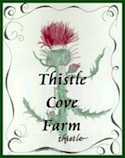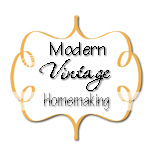
Here are her tips for the best bread (I think this was from an old newsletter). I've used them for years & they are great tips to follow. Want proof? Ask my family. '-)
Blessings from Ohio...Kim<><
~~~~~~~~~~~~~~~~
Here are my top tips for yeast bread baking for beginners and experienced bakers alike.
1. Use high quality "hard" white or red whole wheat flour. "Hard" refers to high protein wheat that is used exclusively for yeast breads. Purchase flour that has been refrigerated to minimize nutritional loss and use it promptly, or mill your own wheat flour. Since whole wheat flour contains all of the bran which interferes with gluten activity, it is advisable to add vital wheat gluten to boost the strength of the dough or add a little bread flour (not all purpose flour) as part of your flour. Vital wheat gluten is a natural protein derived from wheat which increases dough strength, improves bread texture and the shelf life of baked goods.
2. Use fresh yeast. Proof the yeast if you are uncertain about the quality of the yeast. Proofing is a baker's term to mean combining one teaspoon or yeast with 1/4 Cup warm water (100 ° F) and a teaspoon of sugar in a one cup measuring cup. If the mixture isn't bubbled up almost to the top of the cup in 10 minutes, discard the yeast and purchase fresh yeast. Store unused yeast in moisture, vapor proof containers in the freezer to promote shelf life. When moisture comes into contact with yeast, it quickly looses its potency. I prefer Saff Instant Yeast for reliability and more live yeast organisms per tablespoon of yeast.
3. Use warmed liquids. The ideal liquid temperature is around 110 degrees for yeast breads. When you add flour and other ingredients the temperature will drop somewhat. If you don't have a thermometer, check the water temperature on your wrist and if it isn't too hot to feed a baby then it should be just right. Yeast organisms thrive in bread dough that is about 85 degrees. Don't worry if you don't have perfect temperature, just lengthen the rising time to compensate if your dough is cooler or shorten the rising time if it is quite warm. Raising bread in a warmed oven will significantly speed rising times but the bread structure will be weak and the loaf may easily fall.If possible, allow enough time for the yeasted dough to rise naturally. Baker's call the rising time fermentation, which is essential for full development of flavor and texture.
4. Use the right amount of flour. The biggest mistake baker's make is adding too much flour while kneading the bread. Too much flour results in a dry, crumbly bread. While kneading your bread, be a little stingy with the flour, the dough should be smooth and elastic, but not sticky. If you use a teaspoon of oil on your kneading surface and on your hands you should be able to keep your dough from being too sticky and using excess flour.
5. Develop the Gluten. Another common mistake in baking bread is not getting the gluten fully developed. Gluten is the protein part of the dough which creates the structure for the dough, holding all the little air bubbles created by the yeast, and allowing the dough to rise. The secret to recognizing if the gluten is developed is to take a golf ball sized portion of dough, hold it between the thumb and index finger of both hands and gently stretch the dough in opposite directions. You should be able to flatten and stretch the dough out thin enough to let light through. If not, and the dough readily tears, you probably need to do a little more kneading. Add vital wheat gluten if your bread is not rising very well to avoid heavy dense loaves.
6. Proof the Dough. Proofing is a baking term for allowing bread dough to rise outside the oven. This crucial step will help develop flavor, and strengthen the gluten framework.
7. Shape the Loaf! There are several ways to shape a loaf but the key is to make sure all the air bubbles are squeezed out before the loaf is set to rise. Also be sure to fill your bread pans only half to two thirds full so that you don't end up with an under or over sized loaf. I have found that loaf pans that measure roughly 8" by 4" make the prettiest, highest rising whole grain loaves of bread. Whole grain doughs just don't rise as tall and pretty if wider loaf pans are used. But use what you have!!!
8. Bake the bread! Generally, bake bread at 350° F or in a moderate oven. If you are baking three or more loaves at once, that I need to rotate the outside loaves about 15 minutes before the bread is completely baked for even browning.
9. Assess the Doneness by one of the following methods. There are a number of tips in determining proper doneness. Some bakers tap the loaf for a "hollow" sound. I prefer the less subjective methods of assessing determining if the loaf is done. An instant read thermometer is invaluable. Set the thermometer for 190 degrees. When the internal temperature of the loaf reaches 190, the bread is done. Others have told me any temperature between 180 and 200° will work. If you don't have the instant read thermometer, the loaf is done when nicely browned top, bottom, and sides! Keep in mind that whole grain loaves will be much darker than white bread.
10. Enjoy! Who can resist a piece of hot, steaming, nutty and fragrant whole grain bread you made yourself now and then? Indulge a little butter on a fresh slice and savor the fruits of your efforts to nourish your family with healthy foods! Wrap cooled bread securely in high quality, re-useable bread bags. Be sure to bless others with the fruits (loaves) of your labor occasionally.

Marilyn Moll, passionate lover of old-fashioned skills, together with her sweet late husband, Duane, and three homeschooled children (now homeschool grads!) have been running urbanhomemaker.com, specializing in grain mills, Bosch mixers and products for better health for many years. Complimentary catalogs are available upon request. Join her newsletter, From the Heart of The Urban Homemaker, for tips, information, recipes, product specials and more!




















 Edinburgh
Edinburgh








































































Now you're speaking my language! I just got out a jar of black raspberry freezer jam and was thinking about making a loaf for pb&j's. Thanks for the reminder!
ReplyDeleteThanks for the tips. I am entering some bread for the fair this year...hope the tips help!
ReplyDeleteThank you for the tips.Your bread looks amazing!
ReplyDeleteYummy!! My son Josiah loves bread if it were the only food on the planet he would be a happy boy. He's know at church as the boy who takes the biggest piece of bread during communion. I think Jesus smiles when he see's him do that.
ReplyDeleteIf it wasn't so late I would go up and make bread tonight. I could almost smell the homemade bread and nothing is so good as warm bread and jam.
ReplyDeleteHugs to you! LeAnn